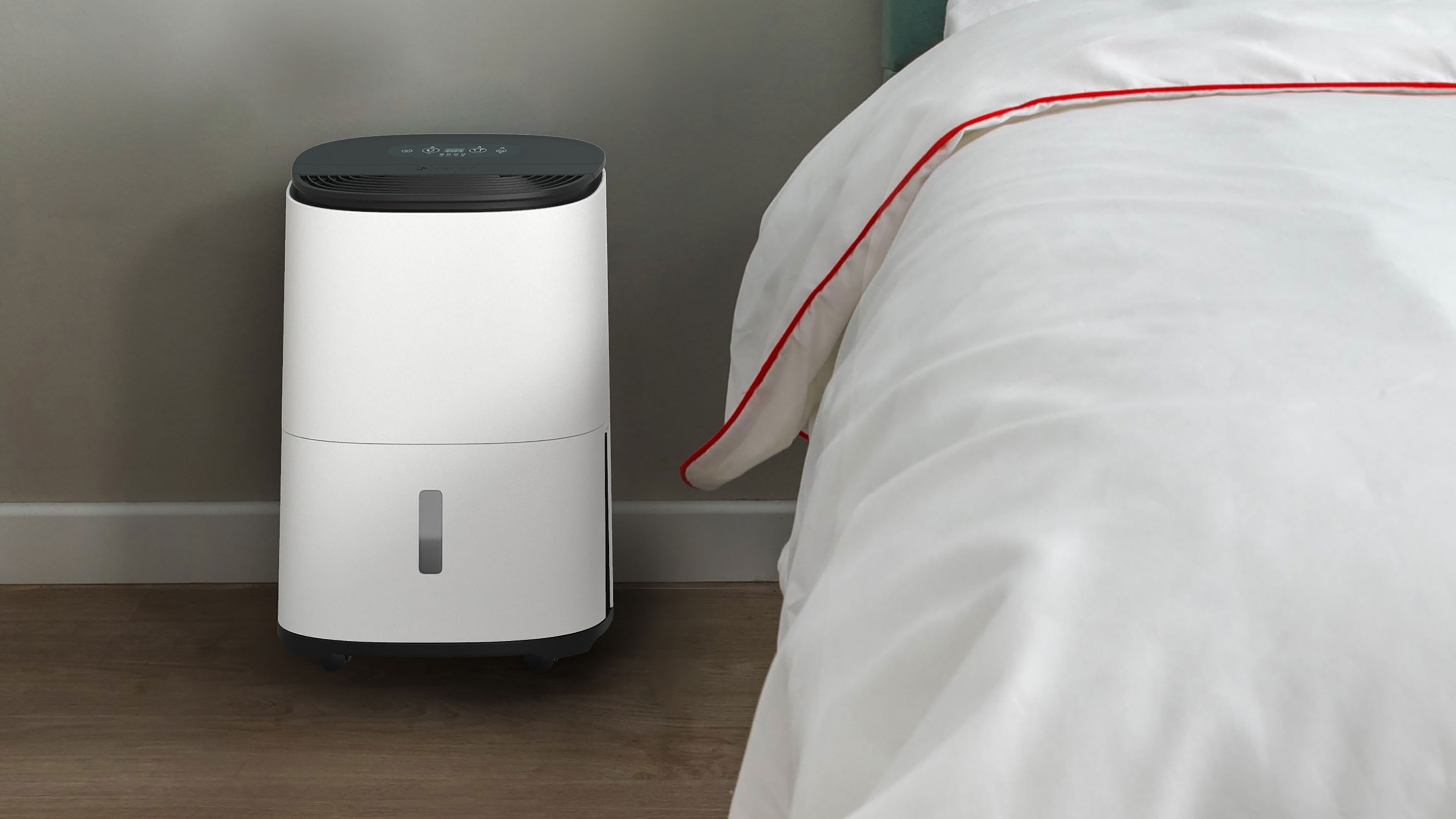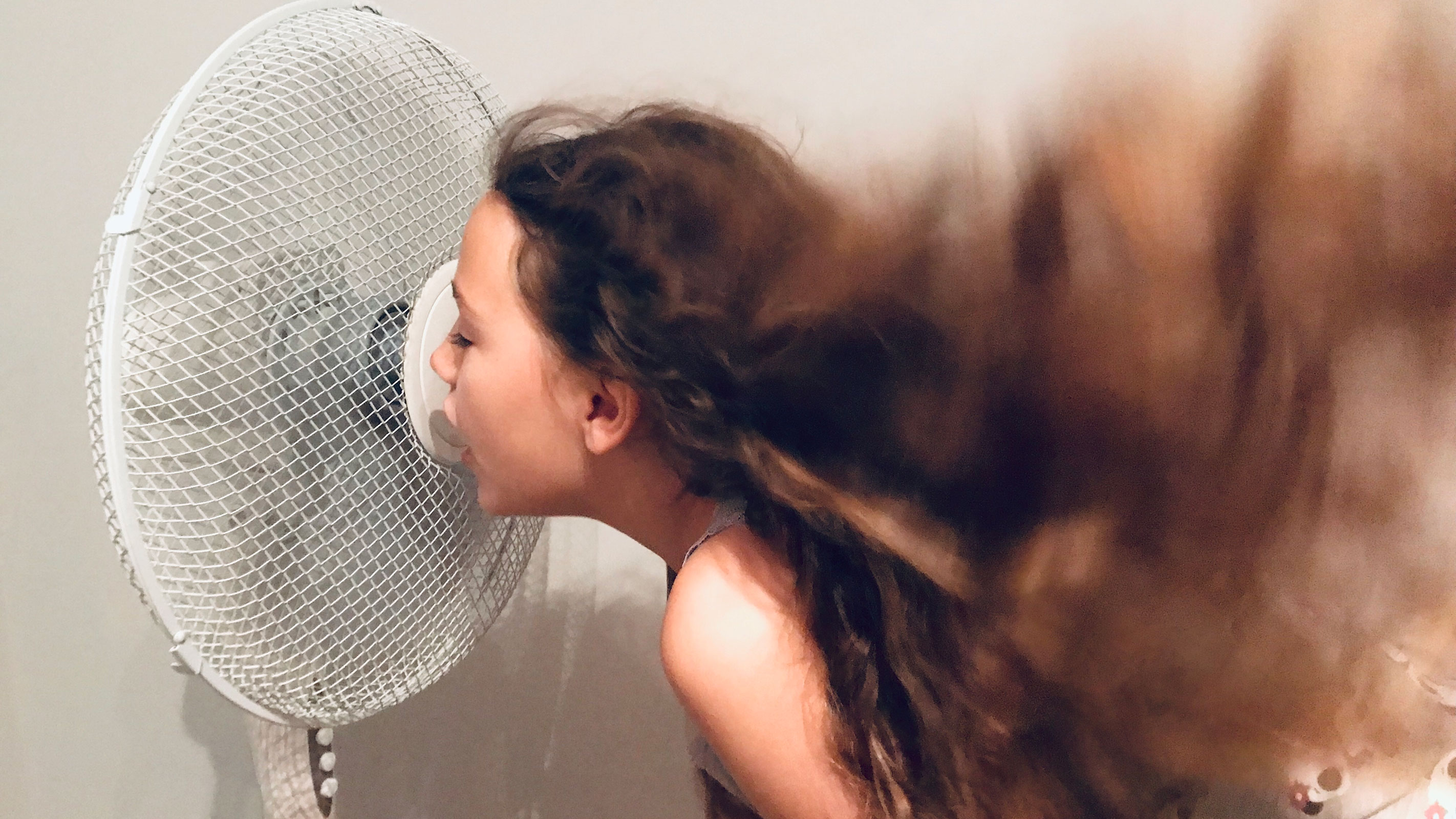Can a dehumidifier cool a room? What you need to know
With the arrival of summer, many have been asking 'can a dehumidifier cool a room?' We asked the experts for their opinion and took a look at exactly what these handy pieces of kit could do for you

Perhaps you invested in one to stop condensation, but can a dehumidifier cool a room?
These handy appliances can actually perform all kinds of functions to help homeowners enjoy a more comfortable environment in their houses, but exactly how do dehumidifiers work and could they come in useful as temperatures rise and things start to get uncomfortably hot? In short, can they help with lowering the heat in a room or house?
In this article, we look at whether using a dehumidifier to cool down a room is a viable option or whether running your appliance in order to get some respite from the heat is nothing more than a waste of money and energy. We also investigate the other best uses of a dehumidifier and the alternative ways of cooling down a room fast.
Can a dehumidifier cool a room?
If you were hoping to use your dehumidifier to cool down a room then you are going to be sorely disappointed.
"The answer is definitely no," states Meaco’s managing director Chris Michael. "Consumers often wonder this and they should be set straight. No room for confusion here."
So there you have it, in no uncertain terms.
Does a dehumidifier heat a room? Yes, it can certainly help, but if you have invested in a dehumidifier what can you, realistically, expect from it?
What does a dehumidifier do?
It is important to understand the limitations of any appliances in your home — including dehumidifiers. We are all trying to keep an eye on our energy bills right now and using appliances for the wrong purpose will most certainly not help with this.
"A dehumidifier removes moisture from the air — excess moisture that you do not want to condense and hang around your home," explains Chris Michael. "It helps to ease damp problems, gives you healthier air to breath and can even make your energy use more efficient."
What's more, they can even help when it comes to making the dreaded task of mould removal a thing of the past.
"There are two main types of dehumidifier — the desiccant dehumidifier and the compressor dehumidifier," continues Chris.
Desiccant dehumidifiers are great for colder areas of the house, such as a garage or where there is no heating. "The air is drawn in over a filter and passed over an absorbent material called Zeolite," says Chris Michael. "When the material is saturated, a heater in the dehumidifier blows warm dry air across the Zeolite and the moisture condenses into water which is then dropped into a collection tank. The warm air is then passed back out of the dehumidifier at a higher temperature than the air that was taken in, so this dehumidifier can also act as a gentle heater."
If you want your dehumidifier to prevent damp and perhaps help clothes dry quicker in a laundry room, a compressor dehumidifier is your best bet.
"This type of dehumidifier draws in the air but instead of using the absorbent Zeolite, compressors have a cold-coils system, like a fridge," says Chris Michael. "These types of dehumidifiers are often also referred to as ‘refrigeration dehumidifiers’. They have two sets of coils, the first cools to create the condensation, which is collected into the water tank, the second warms the dry air back to just above room temperature."

What problems can a dehumidifier solve?
We now know that a dehumidifier cannot cool a room — so what can they help with?
- Reduce or prevent condensation
- Prevent damp issues
- Dry clothes faster
- Provide gentle, background heat
- Reduce relative humidity in your house
Do air conditioners dehumidify?
Now you know that a dehumidifier won't help in your quest to keep cool this summer, you may well be considering buying an air conditioning unit instead.
"The simplest air conditioning unit is the portable unit," explains David Hilton, an authority in sustainable building and energy efficiency. "They are an all-in-one unit that is simply plugged into a wall socket and can operate anywhere in the home — you’ll be able to move it from room to room as required. There is the requirement to place a duct out of a window to expel the resultant warm air to the outside and you will also require a container to capture the condensation produced."
Your other option is to take the plunge and invest in a fully installed air conditioning unit.
"These will have two parts and need to be installed by a registered gas engineer," says David. "There is a fan unit that is located outdoors and is connected via copper pipework and electrical connections to an indoor unit that delivers the cool air. The indoor unit can be a simple bolt-on box that goes on the wall at a high or low level, a hidden unit that can be in the ceiling or boxed in above wardrobes or above the door with the air distributed through a grille, or it can also be a fan unit that is located in a plant room or loft space with the cool air distributed to the rooms via a number of ducts. These systems are known as split air conditioning systems."
But do either of these also act as dehumidifiers too?
"Air conditioning units do act as types of dehumidifiers," advises David. "When air is cooled, the water vapour in the air condenses and is no longer in the air, thus lowering the humidity."
If you like the idea of combining a dehumidifier and air conditioning unit, take a look at a product such as the KGOGO Portable Air Conditioner 9000 BTU 4-in-1 Air Conditioner from Amazon.

What is the best way to cool down a room?
If the dehumidifier is not an option, finding out how to cool down a room in other ways should be something you get to understand before those sticky nights ruin your beauty sleep.
Take note of some of these tips to keep cool as a cucumber in soaring temperatures:
- Keep the sun out by closing blinds, curtains and shutters
- Take a look at the best portable air conditioners around and consider investing in one
- Open windows on one side of the room in question, then open those on the other side to create a cross breeze
- Purchase an electric fan or two
- Keep doors between rooms open
- Switch off lights and appliances
- Fit external awnings over windows that receive the most light
- Install a ceiling fan

Get the Homebuilding & Renovating Newsletter
Bring your dream home to life with expert advice, how to guides and design inspiration. Sign up for our newsletter and get two free tickets to a Homebuilding & Renovating Show near you.
Natasha was Homebuilding & Renovating’s Associate Content Editor and was a member of the Homebuilding team for over two decades. In her role on Homebuilding & Renovating she imparted her knowledge on a wide range of renovation topics, from window condensation to renovating bathrooms, to removing walls and adding an extension. She continues to write for Homebuilding on these topics, and more. An experienced journalist and renovation expert, she also writes for a number of other homes titles, including Homes & Gardens and Ideal Homes. Over the years Natasha has renovated and carried out a side extension to a Victorian terrace. She is currently living in the rural Edwardian cottage she renovated and extended on a largely DIY basis, living on site for the duration of the project.

